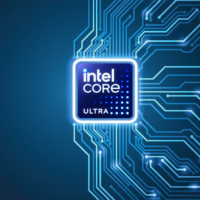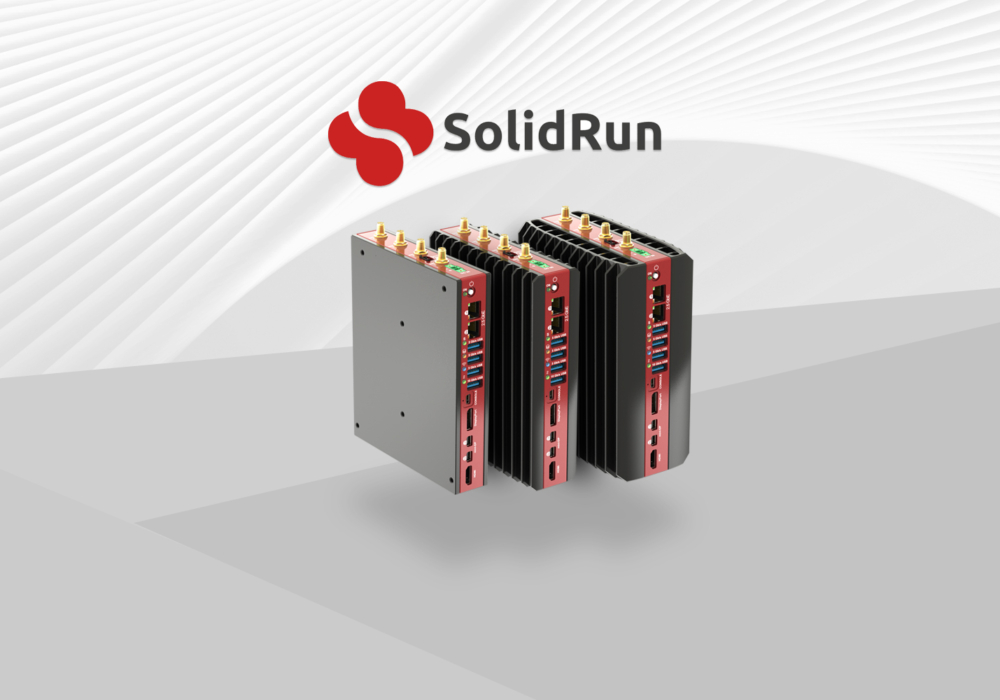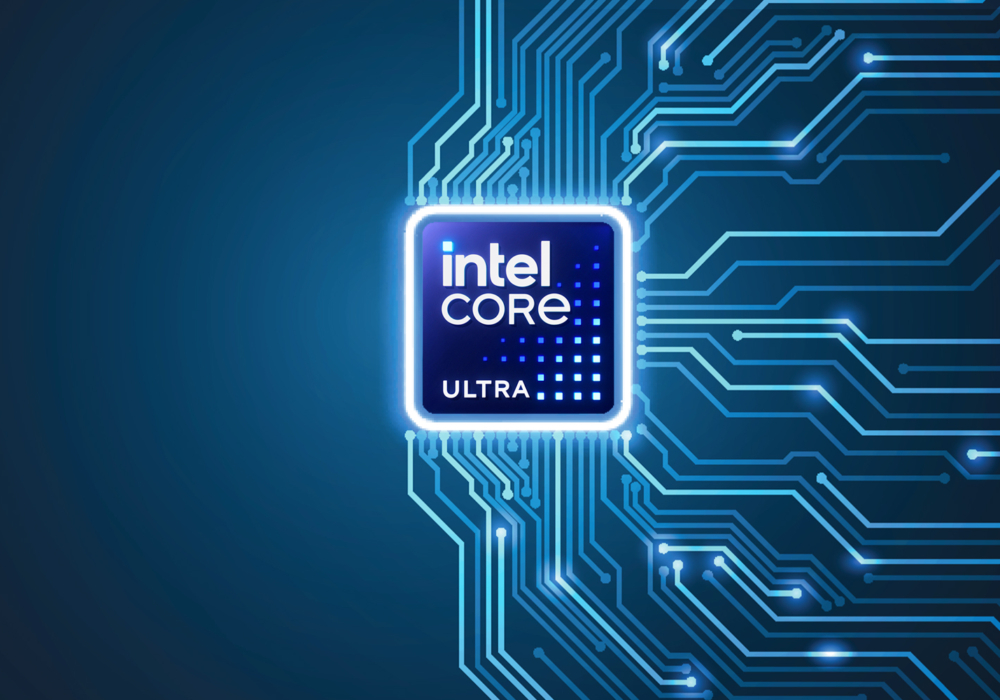In this article:
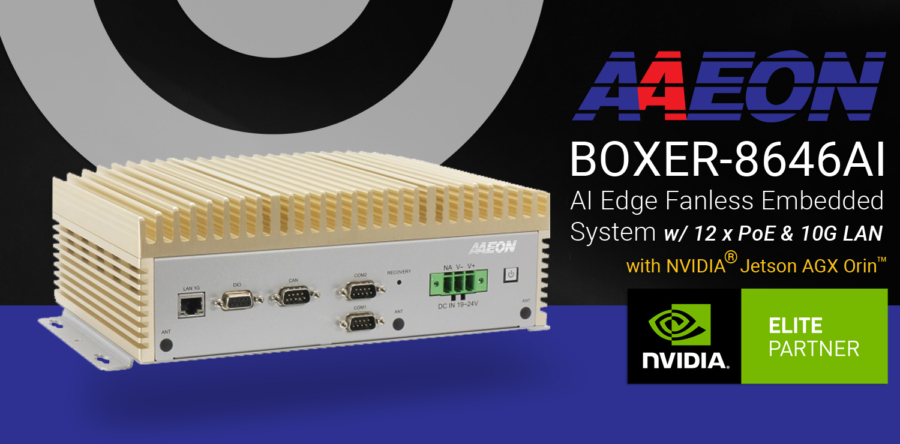
The BOXER-8646AI sets new standards in AI performance and data transmission. With ten times the data transmission rate via 10G LAN and six times the AI performance, reaching up to 200 TOPS using the NVIDIA Jetson AGX Orin, this system stands out from previous models.
It is the sole NVIDIA Jetson AGX Orin-powered system equipped with 12x PoE and 10G LAN ports, expanding connector options for cross-market AI edge solutions. Featuring a multitude of expansion possibilities and comprehensive I/O, the BOXER-8646AI enables scalability, enhancement and diversification across any application.
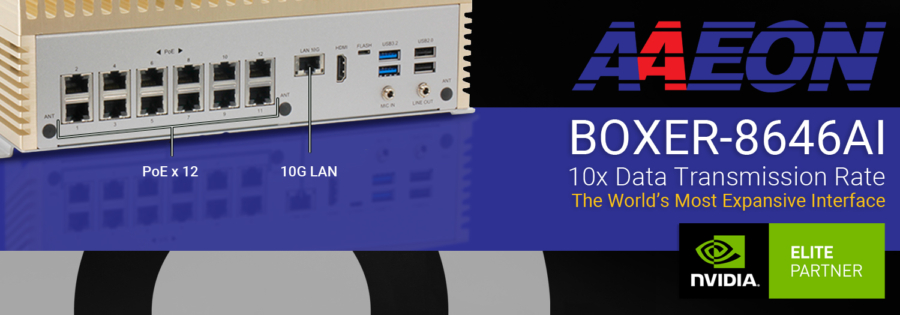
The World's Most Expansive Interface
The BOXER-8646AI sets a new benchmark in ethernet interface capacity, featuring 12x PoE LAN ports that triple the capabilities of previous generations of NVIDIA Jetson SoM-powered Box PCs. This ground-breaking design empowers users to connect a higher number of top-quality peripheral cameras for various edge AI applications, including smart safety and traffic management solutions. Furthermore, the BOXER-8646AI delivers exceptional data transmission speed with its 10G LAN, fostering unparalleled connectivity and synergy.
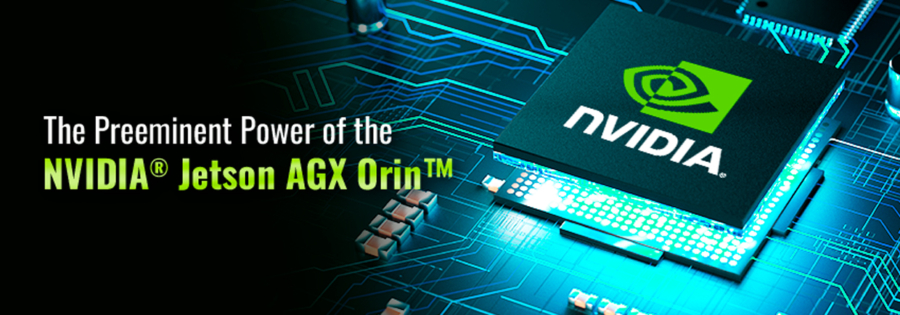
Applications
Smart Safety
In an era driven by technological advancements, the integration of Artificial Intelligence (AI), Power over Ethernet (PoE) ports, and Local Area Network (LAN) technology has revolutionized smart safety systems. These innovative technologies have transformed traditional safety measures into highly efficient, proactive and interconnected solutions. In this article, we delve into the transformative impact of AI, PoE ports and LAN in smart safety applications, leading to enhanced security, real-time monitoring and rapid response capabilities.
AI-Powered Smart Safety:
AI serves as a cornerstone in the evolution of smart safety systems, enabling advanced analytics, machine learning, and computer vision capabilities. Here are key ways in which AI enhances smart safety:
- Intelligent Surveillance: AI-powered surveillance systems can analyse video feeds in real-time, detecting anomalies, identifying potential threats and triggering alerts. This proactive approach enables early threat detection, enabling swift and effective responses to ensure the safety of individuals and property.
- Automated Monitoring and Analytics: AI algorithms can process vast amounts of data from various sensors, cameras and IoT devices. This enables automated monitoring of critical safety parameters, such as gas leaks, fire hazards, or unauthorized access. AI analytics provide actionable insights, allowing for predictive maintenance and proactive safety measures.
- Facial Recognition and Access Control: AI-driven facial recognition technology enhances access control and authentication processes in smart safety applications. It enables secure and efficient identification of individuals, preventing unauthorized access and enhancing overall safety and security.
PoE Ports: Power and Connectivity for Smart Safety
PoE ports play a vital role in powering and connecting various components of smart safety systems. Here’s how PoE ports contribute to the effectiveness of smart safety applications:
- Streamlined Installation: PoE ports eliminate the need for separate power cables and outlets for devices such as cameras, sensors, and access control systems. This simplifies installation, reduces wiring complexity and lowers deployment costs, enabling efficient implementation of smart safety solutions.
- Continuous Power Supply: PoE ports provide a reliable and uninterrupted power supply to connected devices. This ensures continuous operation, even during power outages, ensuring that critical safety systems remain functional at all times.
- Centralised Control and Management: PoE ports enable centralized control and management of connected devices. Administrators can remotely monitor and manage power consumption, perform diagnostics, and address any issues promptly. This centralised approach ensures efficient maintenance and optimized performance of smart safety systems.
LAN Connectivity: Seamless Communication and Integration
LAN connectivity forms the backbone of communication in smart safety systems, facilitating real-time data exchange, coordination and integration. Here’s how LAN enhances smart safety:
- Real-time Data Sharing: LAN connectivity enables fast and secure data sharing between safety devices, sensors, and control systems. This allows for real-time monitoring, seamless integration of safety data, and quick decision-making to mitigate potential risks.
- Integration with Alarm Systems: LAN connectivity allows for integration with alarm systems, enabling instant notifications and alerts in case of emergencies. This ensures timely responses and enables rapid deployment of appropriate safety measures.
- Centralised Monitoring and Reporting: LAN connectivity enables centralized monitoring and reporting of safety parameters, such as temperature, air quality, or motion detection. This facilitates efficient data analysis, reporting, and compliance with safety regulations.
The integration of AI, PoE ports and LAN technology has revolutionised smart safety systems, providing advanced capabilities for enhanced security, real-time monitoring and rapid response. AI-powered solutions enable intelligent surveillance, automated monitoring and facial recognition for access control. PoE ports simplify installation, provide continuous power supply, and enable centralized control. LAN connectivity facilitates seamless communication, integration with alarm systems, and centralized monitoring.
Traffic Management
In today’s fast-paced world, efficient traffic management is crucial for ensuring smooth and safe transportation. The integration of Artificial Intelligence (AI), Power over Ethernet (PoE) ports, and Local Area Network (LAN) technology has revolutionized traffic management systems, offering unprecedented capabilities in monitoring, control and optimisation. In this article, we explore the transformative impact of AI, PoE ports and LAN in traffic management, leading to improved congestion management, enhanced safety measures and optimized traffic flow.
AI-Powered Traffic Management
AI serves as a game-changer in traffic management systems, enabling advanced analytics, real-time data processing, and intelligent decision-making. Here are some key ways in which AI enhances traffic management:
- Traffic Monitoring and Prediction: AI algorithms analyse data from various sources, including cameras, sensors and social media feeds, to monitor traffic conditions. This allows for real-time monitoring, early detection of congestion, and accurate prediction of traffic patterns, enabling proactive measures to alleviate congestion and improve traffic flow.
- Intelligent Signal Control: AI-based signal control systems dynamically adjust traffic signal timings based on real-time traffic conditions. This adaptive control optimises traffic flow by allocating green lights to the heaviest traffic streams, reducing wait times, and minimizing congestion at intersections.
- Incident Detection and Management: AI-powered systems can detect and identify incidents such as accidents, breakdowns, or road hazards. Real-time alerts are generated, enabling prompt response from authorities, efficient incident management and reduced response times for emergency services.
PoE Ports: Empowering Traffic Management Infrastructure
PoE ports play a crucial role in the infrastructure of traffic management systems, offering several benefits for efficient operation and connectivity. Here’s how PoE ports empower traffic management:
- Simplified Deployment: PoE ports provide a streamlined and cost-effective solution by delivering power and data over a single Ethernet cable. This eliminates the need for separate power supplies and simplifies the installation process, reducing deployment time and minimising disruption to traffic infrastructure.
- Remote Accessibility and Control: PoE ports enable centralized control and monitoring of traffic management devices. Administrators can remotely access and manage cameras, sensors and other connected devices, allowing for efficient system maintenance, configuration updates, and troubleshooting.
- Flexibility and Scalability: PoE ports offer flexibility in expanding and reconfiguring traffic management systems. Additional devices can be easily added or relocated without the limitations of power outlet availability, allowing for seamless scalability as traffic demands evolve.
LAN Connectivity: Seamless Communication and Integration
LAN connectivity forms the backbone of communication in traffic management systems, enabling real-time data exchange, coordination, and integration. Here’s how LAN enhances traffic management:
- Real-time Data Exchange: LAN connectivity facilitates fast and reliable data exchange between traffic sensors, cameras, and central control systems. This enables real-time monitoring of traffic conditions, seamless data integration, and quick decision-making for effective traffic management strategies.
- Integration with Intelligent Systems: LAN connectivity allows for integration with intelligent systems, such as weather monitoring stations, vehicle detection systems, and emergency services. This integration enables data sharing, collaboration, and coordinated responses to ensure efficient traffic management and incident mitigation.
- Advanced Analytics and Reporting: LAN connectivity enables the aggregation and analysis of traffic data from multiple sources. Advanced analytics tools can process this data, generating actionable insights and comprehensive reports for traffic planners and policymakers, leading to evidence-based decision-making and continuous system improvements.
The use of AI, PoE ports and LAN technology has revolutionised traffic management, offering advanced capabilities for monitoring, control and optimisation. AI-powered systems enable real-time traffic monitoring, intelligent signal control and efficient incident management. PoE ports simplify deployment, provide remote accessibility and enhance scalability.
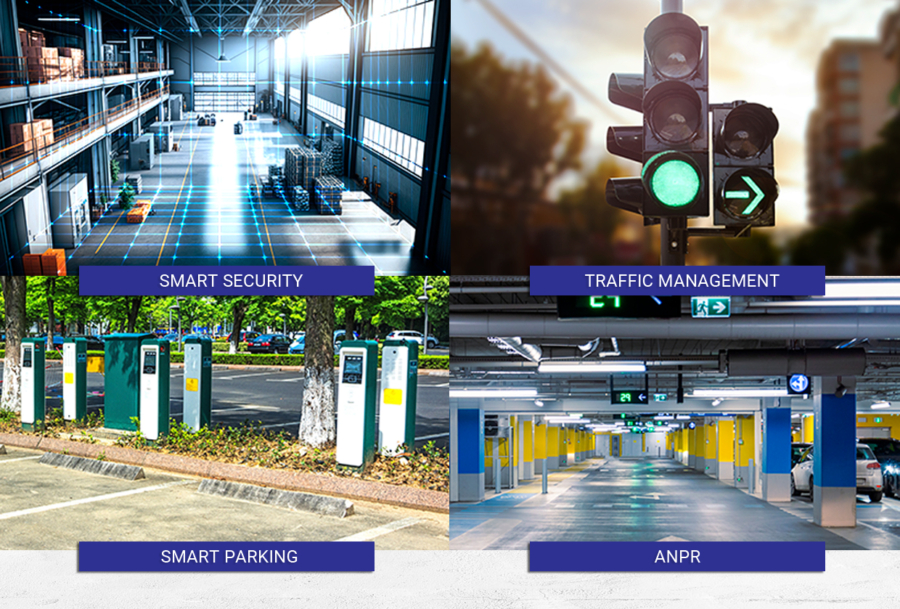
Smart Parking
In the era of digital transformation, smart parking has emerged as a solution to alleviate parking woes and enhance user convenience.
AI-Powered Smart Parking:
AI serves as the backbone of modern smart parking systems, leveraging advanced algorithms and data analytics to improve parking efficiency and user experience. Here’s how AI enhances smart parking:
- Real-time Parking Availability: AI algorithms analyse data from sensors, cameras, and occupancy detectors to accurately determine real-time parking availability. This information is then relayed to drivers through mobile apps or digital signage, guiding them to vacant parking spaces efficiently.
- Traffic Flow Optimization: AI-powered systems monitor parking lot occupancy and traffic patterns, enabling intelligent traffic flow management. By guiding drivers to less congested areas or alternative parking options, AI minimizes congestion, reduces search time, and improves overall traffic management within parking facilities.
- Enhanced Security and Safety: AI-driven surveillance cameras equipped with computer vision technology can identify suspicious activities, such as unauthorized access or vandalism. Real-time alerts can be triggered, allowing security personnel to respond promptly, ensuring a safer parking environment for users.
Power over Ethernet (PoE) Ports: Streamlining Power and Connectivity
PoE ports provide a robust infrastructure for smart parking systems by combining power and data transmission over a single Ethernet cable. The integration of PoE ports brings significant benefits:
- Simplified Installation: PoE eliminates the need for separate power supplies for devices such as cameras, sensors, and access control systems. This simplifies the installation process, reduces cabling complexity, and lowers costs associated with additional power outlets and wiring.
- Centralised Power Management: With PoE ports, administrators can centrally monitor and control power usage for connected devices. This enables efficient power allocation, remote troubleshooting, and proactive maintenance, ensuring optimal performance and preventing power-related system failures.
- Scalability and Flexibility: PoE facilitates seamless scalability as new devices can be easily added or relocated without the limitations of power outlet availability. This flexibility allows smart parking systems to adapt to changing requirements and future expansions effortlessly.
LAN Connectivity: Seamless Communication and Integration
LAN connectivity forms the backbone of communication in smart parking systems, enabling real-time data exchange and integration with various components. Here’s how LAN enhances smart parking:
- Real-time Data Exchange: LAN connectivity enables quick and accurate data transmission between parking sensors, cameras and central management systems. This facilitates real-time monitoring of parking occupancy, revenue, and system performance, allowing administrators to make data-driven decisions and optimize parking operations.
- Remote Monitoring and Control: LAN technology empowers administrators to remotely monitor and control parking operations, access surveillance cameras, and manage connected devices. Remote accessibility ensures prompt issue resolution, proactive maintenance, and efficient troubleshooting, improving overall system management.
- Integration with IoT Devices: LAN connectivity enables seamless integration with IoT devices, such as mobile apps, payment systems, and smart meters. This integration enhances user convenience, enabling features like mobile-based reservations, cashless payments, and personalised parking services.
The use of AI, PoE ports and LAN technology has transformed smart parking into an efficient, connected and user-centric experience. AI-driven algorithms optimise parking availability and traffic flow, while PoE ports simplify installation, power management, and scalability. LAN connectivity enables seamless communication, real-time data exchange and integration with IoT devices, enhancing overall system performance.
ANPR
License Plate Recognition (LPR), also known as Automatic Number Plate Recognition (ANPR), has become an indispensable technology for various applications, including law enforcement, parking management, and toll collection.
AI-Powered ANPR:
AI serves as a catalyst in revolutionising ANPR/ALPR systems, enabling advanced image processing, pattern recognition and machine learning algorithms. Here’s how AI enhances ANPR/ALPR:
- Enhanced Accuracy: AI algorithms can analyse license plate images, even in challenging conditions such as low light, varying angles, or poor image quality. AI-powered ANPR systems achieve high accuracy rates in license plate recognition, reducing false readings and enhancing overall system reliability.
- Real-time Data Processing: AI-powered ANPR systems can process license plate information in real-time, enabling instant identification and analysis. This real-time processing allows for rapid decision-making and immediate responses in various applications, such as toll collection, access control, or security monitoring.
- Intelligent Analytics: AI-based ANPR systems can extract valuable insights from license plate data, such as vehicle patterns, traffic flow analysis, or violation detection. These analytics provide valuable information for law enforcement, transportation planning, and operational optimisation.
PoE Ports: Power and Connectivity for ANPR Systems
PoE ports play a critical role in powering and connecting ANPR devices, ensuring seamless operation and efficient data transmission. Here’s how PoE ports contribute to ANPR systems:
- Simplified Installation: PoE ports eliminate the need for separate power cables and outlets for ANPR cameras and devices. This simplifies installation, reduces costs associated with additional wiring, and enables flexible device placement in various environments.
- Reliable Power Supply: PoE ports provide a reliable power source for ANPR devices, ensuring continuous operation. This is particularly beneficial in remote or outdoor locations where access to power outlets may be limited. PoE ports offer a stable power supply, minimizing system downtime and improving overall system reliability.
- Centralised Management: PoE ports enable centralized power management and control. Administrators can monitor and manage power usage, perform remote diagnostics, and configure settings for ANPR devices. This centralised approach streamlines maintenance, reduces downtime, and ensures optimal performance.
LAN Connectivity: Seamless Data Transmission and Integration
LAN connectivity forms the backbone of ANPR systems, facilitating seamless data transmission, coordination and integration. Here’s how LAN enhances ANPR:
- Real-time Data Exchange: LAN connectivity enables fast and secure data exchange between ANPR cameras, control systems, and databases. Real-time data exchange ensures instant access to license plate information, allowing for immediate action, such as vehicle identification or security alerts.
- Integration with Centralised Systems: LAN connectivity allows ANPR systems to integrate with centralized databases, security systems, or management platforms. This integration enables comprehensive data analysis, centralized reporting, and efficient coordination across multiple applications, such as parking management or law enforcement.
- Scalability and Flexibility: LAN connectivity enables easy scalability and adaptability of ANPR systems. Additional cameras or devices can be seamlessly integrated into the network, ensuring the system can expand to accommodate growing requirements or changing surveillance areas.
The integration of AI, PoE ports and LAN technology has revolutionised ANPR systems, enhancing accuracy, real-time data processing and seamless integration. AI-powered ANPR ensures high accuracy rates, real-time processing and intelligent analytics.
Summary - AAEON BOXER-8646AI
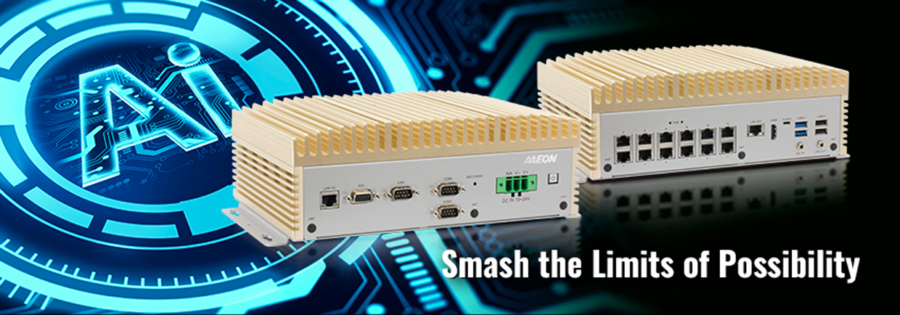
The BOXER-8646AI enhances project performance and reach with its record-breaking PoE interface and tremendous computing power. Its design encompasses every aspect, including a wide -20°C to 50°C temperature range for extensive deployment options. Additionally, the system features LPDDR5 system memory, CAN Bus and RS-232/422/485 support, ensuring fast and reliable functionality for edge applications.
Moreover, expansion options like NVMe, Wi-Fi, and LTE unlock limitless possibilities, making the BOXER-8646AI a versatile, powerful, and unique solution.
Features include:
- NVIDIA Jetson AGX Orin
- PoE/PSE GbE LAN x 12
- 10G LAN x 1 and Giga LAN x 1
- Multi-expansion: M.2 E Key / M.2 B Key / M.2 M Key
- CANBus / COM / DIO


